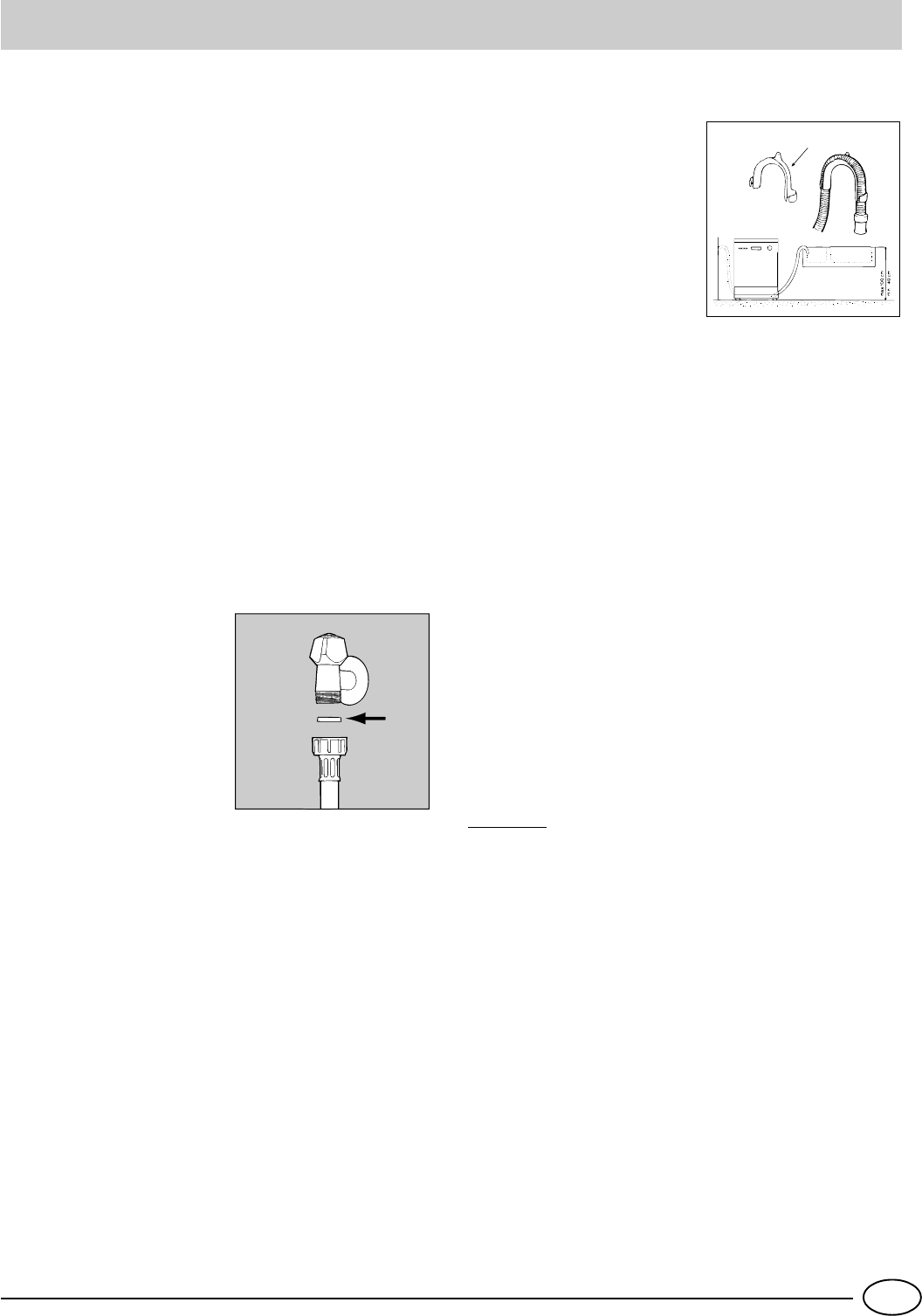
9
GB
Installation
A
Positioning the Appliance
Position the appliance in the desired location. The back
should rest against the wall behind it, and the sides, along
the adjacent cabinets or wall. The dishwasher is equipped
with water supply and drain hoses that can be positioned to
the right or the left to facilitate proper installation.
Levelling the Appliance
Once the appliance is positioned, adjust the feet (screwing
them in or out) to adjust the height of the dishwasher, making
it level. In any case, the appliance should not be inclined
more than 2°.
If the appliance is level, it will help ensure proper perfor-
mance.
Adjusting the Back Feet
Insert the appliance into the cutout and then adjust the height
using the screws located on the front bottom part of the
machine. Use a screwdriver to turn the screws in the clockwise
or anti-clockwise direction to increase or decrease the height
respectively.
Cold Water Connection
Connect the cold water supply hose to a threaded 3/4 (gas)
connector, inserting the small filter supplied with the
dishwasher and making sure
that it is fastened tightly in
place (see figure 2).
If the water pipes are new or
have not been used for an
extended period of time, let the
water run to make sure that
the water is clear and free of
impurities. If this precaution is
not taken, there is a risk that
the water inlet can get blocked
and damage the appliance.
Hot Water Connection
The water supply to the appliance can also be connected to
the house's hot water line (centralised system, heating
system), as long as it does not exceed a temperature of 60°
C.
In this case, the wash cycle time will be shortened by about
15 minutes and the wash efficiency slightly reduced.
The connection must be made to the hot water line following
the same procedures as those for the connection to the cold
water line.
Drain Hose Connection
Insert the drain hose into a
drain pipe with a minimum
diameter of 4 cm., or let it run
into the sink, making sure to
avoid bending or crimping it.
Use the speical plastic support
that comes with the appliance
(see figure to the right). The
free end of the hose must be
at a height between 40 and
100 cm and must not be
immersed in water.
Attention: The special plastic hose support must be solidly
fastened to the wall to prevent the drain hose from moving
and allowing water to spill outside the drain.
Electrical Connection
After making sure that the voltage and frequency values for
the current in the home correspond to those on the rating
plate (located on the stainless steel inner door of the
appliance) and that the electrical system is sized for the
maximum voltage on the rating plate, insert the plug into
an electrical socket which is earthed properly (the earthing
of the appliance is a safety requirement mandated by law).
If the electrical socket to which the appliance must be
connected is not appropriate for the plug, replace the plug,
rather than using adpators or the like as they could cause
overheating and burns.
Should the electricity supply cable be damaged, we
recommend that you only contact authorised Technical Service
Centres for the replacement.
CAUTION:
The dishwasher plug must be accessible even when the
appliance is installed as a built-in unit so that maintenance
can be done safely.
A
Fig.2


















